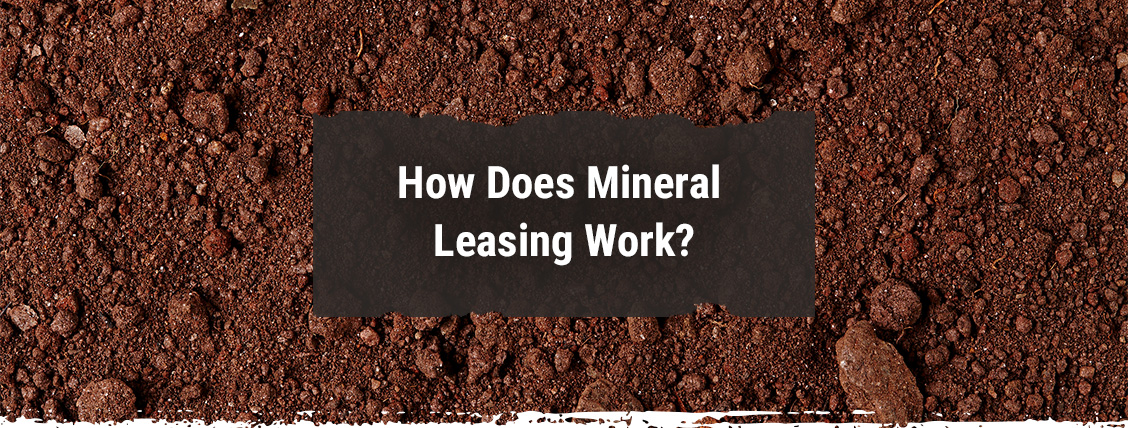
Table of Contents
- Understanding Mineral Rights Ownership
- Negotiating Lease Terms
- Tips for a Solid Lease Agreement
- Clauses to Beware Of
- What Is a Memorandum of Oil and Gas Lease?
- How to Read Your Oil and Gas Royalty Statement
- Why Trust Us?
- Get the Most From Your Minerals With Flat River Minerals
If you own land in Wyoming or Appalachia, you may have been approached by an oil and gas company looking to lease your mineral rights.
Leasing your mineral rights can help you and your descendants gain a steady stream of income for many decades — as long as you take the right steps. Here’s a quick guide to everything you need to know about how mineral rights leasing works.
Understanding Mineral Rights Ownership
Mineral rights are the ownership of underground resources like oil, natural gas and metals. When you have these rights, you can explore for, develop, sell or lease these resources. Most states allow these actions without government authorization, but some require a permit.
Mineral rights and surface rights are separate entities in the U.S. Surface rights allow the owner to improve or sell the surface of the property. While you might own both, it’s also possible for the two to be split among different parties.
Let’s say you own the mineral rights of a property, but someone else owns the surface rights. In a split estate like this, the mineral rights owner’s interests typically override those of the surface rights owner.
What Is a Mineral Rights Lease?
A mineral rights lease is an agreement between the mineral rights owner as the lessor and a third-party company, such as an oil and gas company or mining company, as the lessee that allows the lessee to exploit the lessor’s subsurface minerals for a specified period.
Typically, you’ll negotiate the terms of this lease after a company approaches you about leasing your mineral rights. It’s important to ensure you know the proper value of your mineral rights so you can negotiate for fair compensation.
Negotiating Lease Terms

As with any legal contract, it’s essential to do your due diligence before entering negotiations for an oil and gas lease.
Some of the contractual terms you will want to negotiate include:
- Lease term: The primary term refers to the initial period during which the lessee may explore for and extract minerals from your land. If the lessee establishes production during this period, the lease can extend into a secondary term that lasts as long as the land remains productive.
- Lease coverage: The lease should contain the full legal description of the land covered by the lease.
- Responsibilities of each party: The lease should provide clear expectations for each party, including the lessee’s obligations to make timely payments based on accurate measurements of volumes of oil and gas produced and sold.
- Payments and royalty rates: This section dictates the terms of all royalty payments, including the percentage of royalties you, as the lessor, are entitled to, as well as cost-related language that outlines what costs the lessee can or cannot pass through to you.
Consulting with a legal expert can help you protect your interests while enabling the lessee to be highly productive. An expert can also provide insights into the regional variations you may encounter, which are common in mineral rights law.
Tips for a Solid Lease Agreement
Ensure an airtight lease agreement with these negotiation tips:
- Deprioritize deadlines: An unscrupulous business partner may attempt to pressure you into a lease agreement with unfair deductions. Keep communication clear and open with your potential lessee, and avoid signing anything you feel pressure to sign.
- Account for market changes: The oil and gas market is highly volatile, and commodity prices can fluctuate over time based on changing interest in developing your minerals. Consider how payments may change when evaluating any proposals you receive.
- Look for cost-free language: Also known as a “gross proceeds” lease, a cost-free lease means the lessee cannot charge you for expenses associated with production, including transportation, gathering and processing. The lessee can deduct these expenses from your royalties in a “net proceeds” lease, which may yield significantly lower proceeds than a cost-free lease.
- Get your property appraised: Contact a reputable mineral rights firm for an expert appraisal to prevent prospective lessees from attempting to pay you less than what your mineral rights are worth. Flat River Minerals offers free technical evaluations to help potential lessors understand their ownership.
Clauses to Beware Of
Pay close attention to the following clauses when reviewing your mineral lease agreement:
- Granting clause: The first paragraph of your lease typically describes basic information such as the parties to the agreement, the description of the relevant land and the type of minerals to be extracted. It may also list any restrictions you place on the lessee’s activities.
- Royalty clauses: This clause lays out the percentage of production earnings you are entitled to as the lessor and what costs may be deducted from your royalties. Each region uses different terminology to describe costs, so it may be a good idea to ask a legal professional to assist.
- Habendum clause: This clause establishes the start and end of the lease term, which the lessee can adjust with a lease extension.
- Continuous operations clause: Also known as a continuous development clause, this clause requires the lessee to keep performing activities to further production, such as completing, reworking or repairing a well, even if actual drilling ceases.
- Continuous drilling clause: This clause requires the lessee to begin drilling a new well within a specific period after the completion of a previous well. The lease will terminate on any nonproductive land if the lessee fails to continue developing.
- Market enhancements: This clause restricts the lessee’s ability to make deductions unless the costs are associated with increasing the price received for the hydrocarbons. Be wary of these clauses as they are misleading and enable the lessee to deduct significant expenses that often offset the increased pricing received by the royalty owner.
What Is a Memorandum of Oil and Gas Lease?
A memorandum of oil and gas lease is what the lessee will submit to the county recorder in place of the original lease agreement.
This document notifies other operators of the lessee’s right to extract your minerals without exposing any of the terms listed in your lease agreement. This confidentiality helps companies avoid running over budget because it prevents lessors from knowing whether they are receiving the same terms as others in their area.
How to Read Your Oil and Gas Royalty Statement
Once production begins, you’ll start receiving royalty payments every month via check or direct deposit.
You’ll also receive a check stub, also called a royalty statement. This document accounts for every component of your royalty payment, including which wells are producing and how much you are entitled to for each one. You’ll want to keep these stubs for several years to simplify taxes and royalty audits.
Whether you receive digital royalty statements or physical ones in the mail, they generally contain the following information:
- Identifying information: This section specifies which well the statement applies to using the well name or property ID number. It may also provide geographical details like your state and county.
- Product type or code: This portion identifies which mineral product the lessee extracted using either the product code or the type. It may also list a specific production date.
- Volume sold: You’ll typically see this number communicated in units of 1,000 cubic feet (MCF) for natural gas, barrels (BBLs) for oil or gallons (GAL) for natural gas liquids (NGL). It should also list the sales price per unit sold.
- Deductions and subtotal: The row that reports the monthly royalties per product will also list the deductions taken from your gross royalties, such as processing and marketing fees, taxes, and income tax withholding.
- Footnotes: At the bottom of the page, you may see an explanation of specific terminology and abbreviations used in the statement, which can help simplify interpretation.
If you still have questions about your oil and gas royalty statement, it’s best to consult with a professional.
Why Trust Us?
How do you know the information in this article is trustworthy? Simple — it comes from dedicated experts.
You can count on our experienced team of professionals to give you correct information. Our industry expertise and code of cowboy ethics drive us to say the right thing, even when it’s not the easy thing.
We strive to answer all our readers’ questions so they can make informed decisions regarding their mineral rights, whether they choose to work with us or not.
Get the Most From Your Minerals With Flat River Minerals
Are you looking to lease your minerals? You need to make sure you get the compensation you’re owed. Getting a professional evaluation will help you understand the real value of your property so you can negotiate more effectively.
Lease your minerals to people who have your best interest in mind. Request your free valuation to get started

